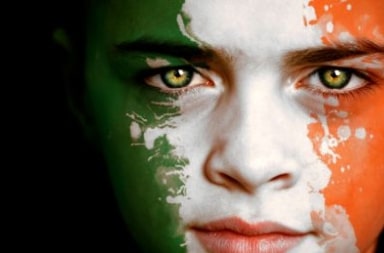The term Republic Day means that it is considered a “public matter” and not a private matter. Its denotes that the position in power resides in the hands of the people of the country and not among the rulers only. It is attained through democracy and autocracy. In India, it is the date when the constitution of India came into effect. The constitution comprises of the supreme laws of India laid down in a book having a framework of the structure, procedures, duties of a government institution, fundamental rights, the duties of the citizen, the directive principles and the fundamental political code. It was on this day of 26th January 1950 that it came into effect replacing the Government Document of India Act, 1935.
After this day it completed its transition towards becoming an independent republic. This day was chosen for the attaining of the democratic-republican because it was on this day that the “Purna Swaraj” (Declaration of the Independence of India) was proclaimed by the Indian National Congress. It was also the day when the Indian nationals opposed the dominion status which was offered by the British Raj.
When India gained Independence on 15th August 1947 the country did not have a permanent constitution. The rules were executed from the modified colonial Government of India Act 1935. With Dr B. R. Ambedkar as the chairman, a draft constitution was prepared and was given to the constituent assembly on 4th of November, 1947 by the committee. The 308 members of this Assembly held sessions for 166 days, which was open to the public and took around two years, 11 months and 18 days for it to come into force. The members of the Assembly then signed two copies of the document on 24th January 1950. On 26th January 1950, Dr Rajendra Prasad became the first president of the Indian Union the very same day when the constitution came into effect throughout the whole nation.
The 308 members of the Assembly became the Parliament of India under the new constitution of India and this day was thus celebrated as the Republic Day in India.
WHAT IS REPUBLIC DAY IN INDIA?
THE CELEBRATION:
Just like the way India celebrates its freedom from British rule as The Independence Day, Republic Day is also celebrated because the constitution of India came into force. The main celebration is done in the capital of India, which is New Delhi at the Rajpath before the President of India every year. It is celebrated to show the unity in diversity and the rich cultural heritage that India has for a very long time. It is a tribute to India that our country has gained the republic on 26th January and thus several ceremonious parades take place at Rajpath. The Republic Day in India is organized by the Ministry of Defence starting from the gates of the Rashtrapati Bhavan where the President of India resides.
The parade then passes the Raisina Hill on Rajpath past the India gate. This lasts for three days and is a major attraction of India`s Republic Day celebration. The Commander-in-chief of the Indian Armed Forces, who is the president of India takes the salute. This is how they showcase India`s defence cultural, capability and social heritage. After this, another ceremony is held to denote the end of Republic Day festivities known as the Beating Retreat. It is performed by the three wings of the military which is the Indian navy, Indian Army and the Indian Air Force.
This ceremony is held in Raisina Hill and in Vijay Chowk which is bounded by the South and North block of the Rashtrapati Bhawan towards the end of Rajpath. The president of India is the chief guest of this ceremony, who is escorted by the cavalry unit. The Indian National Anthem is then played by the Army when the President arrives. Popular tunes like “Saare Jahan Se Achcha”, Abide With Me, are also played after this by the Navy and the Air Force of India. The Republic Day celebration is ended by the award distribution ceremony which takes place during the evening.
The president of India distributes Padma awards to the citizens of India every year. This award is the most important award after the “Bharat Ratna”. Padma Awards is divided into three categories which is Padma Vibhushan, Padma Bhushan and Padma Shri in the decreasing order of their importance. Along with the Padma Awards, allowances, special concessions in air travel or rail is also included. After the award distributing ceremony, its marks the end of the Republic Day celebration for the year.












